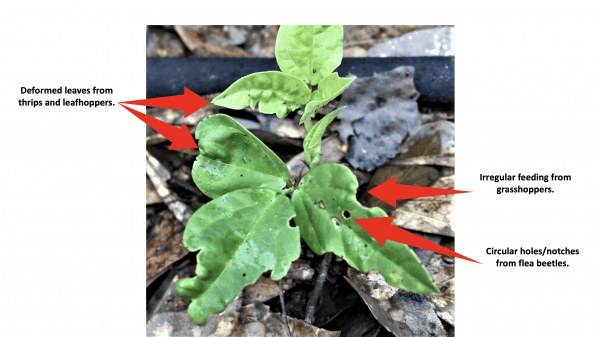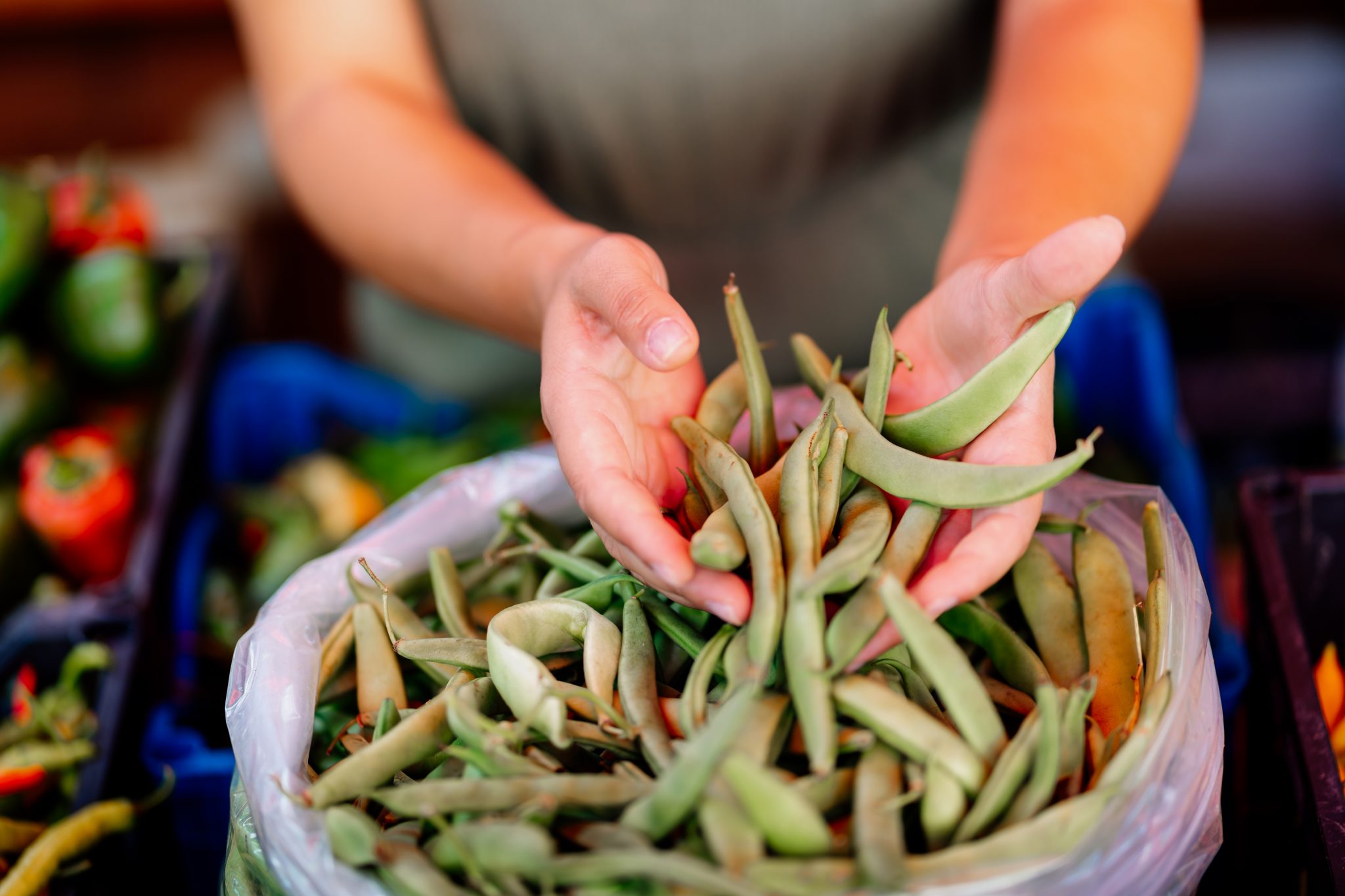Crop Production

Growers should be watching for early season insect pests on their peas and beans. Early in the growing season, leguminous vegetables are in the seedling stage of development and are vulnerable to insect pests. The following insects are commonly seen early in the year. However, people may not see all of the these at once, so they should scout frequently and keep records of their findings.
Insects
 Thrips
Thrips
Thrips are a major pest in Alabama and can cause severe stand loss in peas and beans as well as peanuts (another legume). Thrips are the number one complaint that many Alabama Extension professionals have received over the past 10 days. They are highly mobile insects, about 1 to 2 mm in length, with two pairs of wings that end in long hairs. Thrips may be moved around by storms and settle on plants if it is the right host.
Many species of thrips feed on peas and beans when they are small and cause deformed leaves. In their immature stage, thrips do not have wings. However, all stages have rasping, sucking mouthparts which they use to suck plant sap while staying hidden under the leaves. This causes abnormal cell growth resulting in deformed leaves on seedlings.
Leafhoppers
Adult leafhoppers are about 3 mm long when mature. Nymphs are the immature stage of leafhoppers and are light green or yellow. The adults will jump off plants whereas nymphs walk sideways, staying hidden under the leaves for the majority of the time. Leafhoppers have sucking mouthparts that are used to suck plant sap and disfigure tender leaves. In many crops, leafhoppers also cause hopper-burn which causes extreme yellowing of the leaves, starting from the tip.
Flea Beetles
Flea beetles are a minor pest concern in legumes but they may attack seedlings in gardens. Flea beetles are small beetles that jump off seedlings when approached. They build up in the soil over many years and feed on many cultivated crops and weeds. Unlike thrips and leafhoppers, flea beetles generally feed on top of leaves to cause tiny round holes (shot-hole symptom). Peas generally grow fast in good conditions and are not stressed with flea beetle infestations in later stages.
Grasshoppers
These insects have a wide host range and can eat large chunks of seedling leaves. Grasshoppers lay eggs in the soil, typically in undisturbed areas near the edge of a field. These insects get troublesome during drought, feeding on a numbers of host plants.
Scouting
For thrips and leafhoppers, the crumpling leaves are classic symptoms of infestation. When collecting samples on small seedlings in a large acreage, move quickly and cover the seedling with a transparent sandwich bag, capturing the insects before they fly or jump off. Pinch off the roots of the plant and count the number of insects that fall off the plant into the plastic bag. Direct plant examination is better for scouting flea beetles and grasshoppers.
Typically, thrips and other seedling pests show a strong edge effect. Because of this, growers should start scouting from the edge of the field and move toward the center. In small gardens, there may not be a pattern as the insects readily move from plant to plant assisted by favorable weather conditions.
Managing
Alabama Extension professionals can help vegetable growers develop an integrated pest management (IPM) strategy suitable for their farm or garden. As a part of a proper IPM strategy, growers will use several method for controlling insects. Some of these methods include appropriate production methods, such as timely planting and harvesting, and using pest exclusion fabric for early season management.
Resources
The following resources can help growers in scouting, identifying, and managing insect pests.

